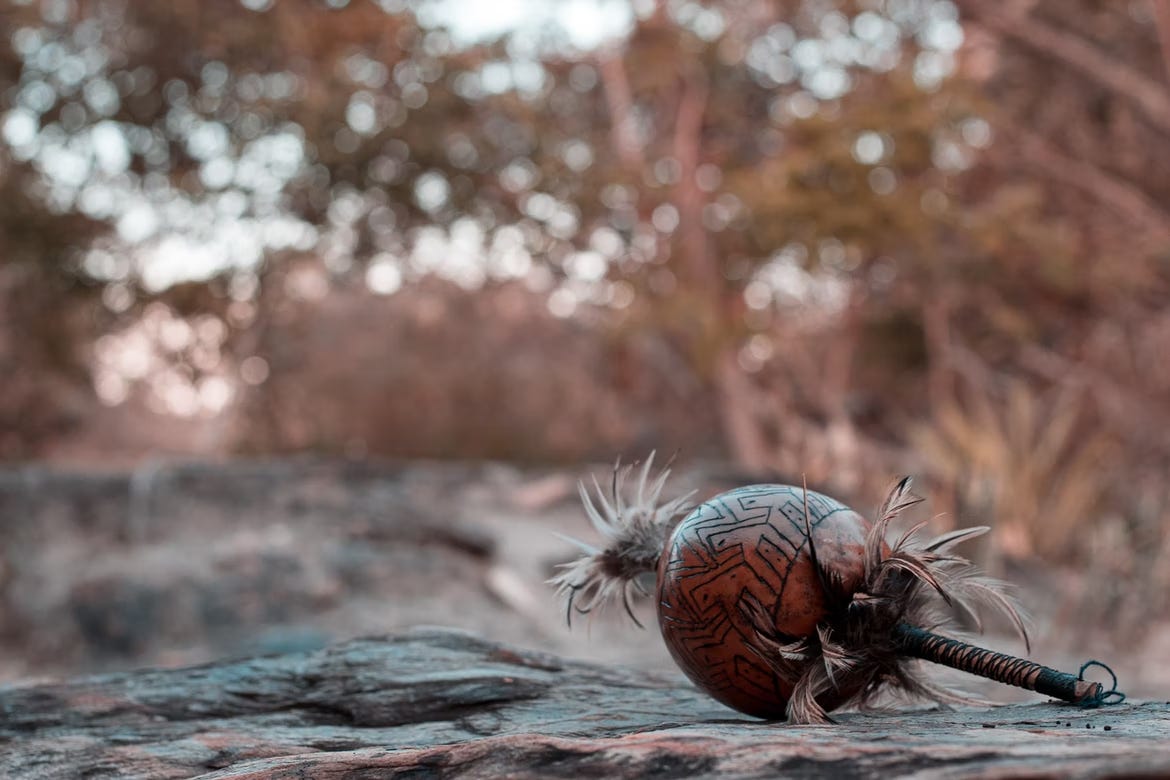TL:DR This mini-essay is the second in a two part series about feminine archetypes, Christianity, paganism, magic, and ancient biotechnology. This second part focuses on traditionally feminine folk knowledge of the mystical properties of plants, the demonization of this knowledge as witchcraft by the early church, and its symbolization by the Holy Grail.
The priestesses at Eleusis were the keepers of ancient biotechnology. They knew their secret potion was safe and effective because it had been tested and retested over many generations. The indigenous peoples of the Amazon basin have a comparable piece of technology. Their “ayahuasca” ceremonies involve a drink made from psychotria viridis shrubs, which contain the potent hallucinogen dimethyltryptamine. But there is one problem: that particular molecule is destroyed by stomach enzymes. That’s why DMT is usually smoked instead of eaten. But somewhere back in the mists of time, the ayahuasqueros figured out that their potion would work if they added banisteriopsis caapi vine. It turns out that this vine contains a monoamine oxidase inhibitor that neutralizes stomach enzymes. We can only guess how many generations of trial-and-error it must have taken to come up with this specific combination of plants from among the 80,000 species native to the Amazon. Trial-and-error testing over long periods of time is a powerful engine. And once the secret is known, it’s passed down to each successive generation as folk medicine…
The crone was the traditional repository of folk medicine. We still refer to “old wives tales” to this day. It is the crone who knows the secret magical properties of all the plants in the wood. And it was she who threatened the spiritual monopoly of the early church. Potions like the one served up at Eleusis had passed through many generations of testing and were undeniably effective. And that was a very inconvenient fact for the early Christian church, as it sought total spiritual control over the Roman Empire. Dan Brown’s 2003 thriller The Da Vinci Code suggests that the Holy Grail is an allegory for the lost sacred feminine. In that book, the mystical chalice is said to represent the bloodline of Jesus Christ. But the other two members of the feminine trinity remain alive and well. The virgin and the mother are both still broadly venerated within the single personage of Mary. It’s not motherhood that was demonized. Or virginity. It was folk knowledge of magic potions that became witchcraft, and the crone became the consort of the devil. The old magical traditions were driven deep underground during centuries of grisly witch-burnings. But they weren’t stamped out entirely. Magic still winks and beckons to us from outside the bounds of polite conversation, waiting for the moment when the reputation of psychoactive plants is finally rehabilitated. That’s always been the true legend of the Holy Grail.






